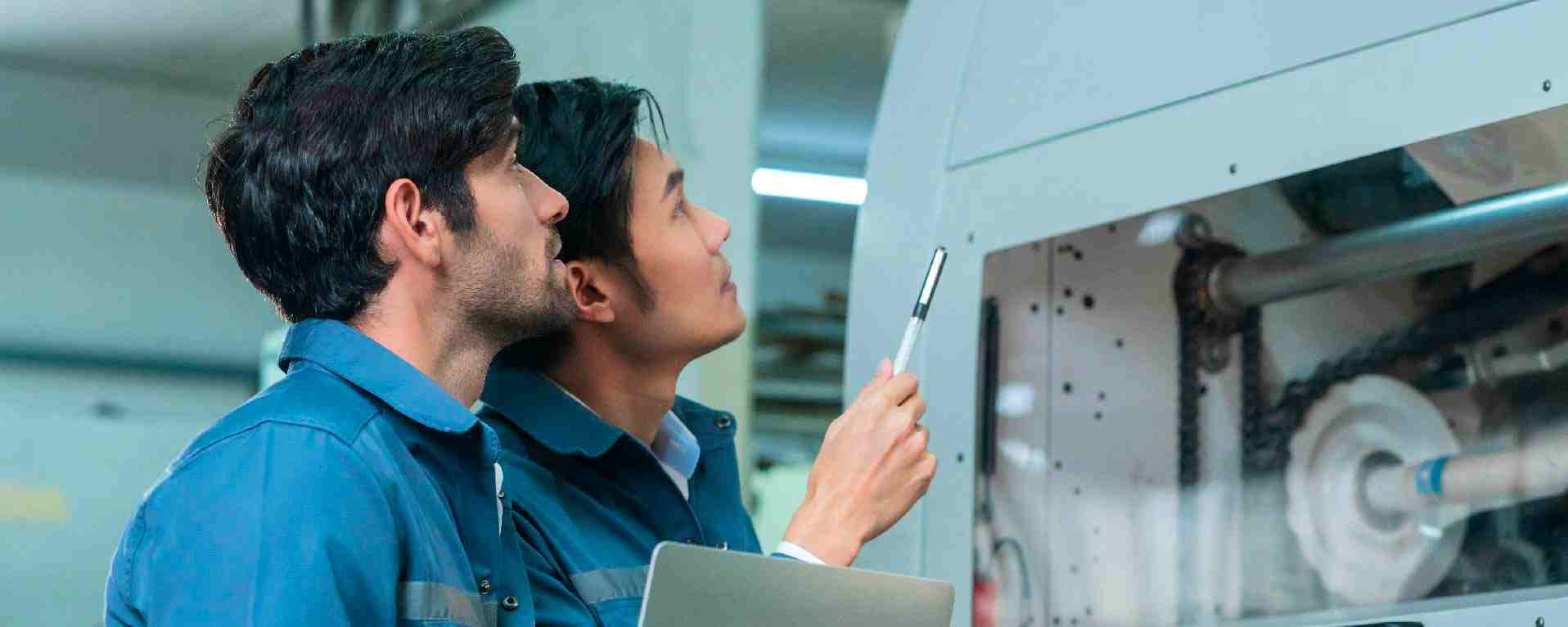
How to Calculate Equipment Downtime
Getting a handle on your equipment downtime can help your reduce costs, maximize efficiency and optimize operations. Here's how to calculate your ...
Solutions
Workplace Management Solutions
Real Estate Management Solutions
Maintenance Management Solutions
Energy Management Solutions
Engineering Document Management Solutions
Asset Management Solutions
Automate campus scheduling for classes, meetings, and exams with our EMS software.
Plan and manage conferences effortlessly with EMS software to impress guests and streamline operations.
Boost workplace flexibility and maximize space use with seamless desk and room booking.
Organize workplace or campus events smoothly, creating memorable experiences.
Optimize workspace, manage allocations efficiently, and reduce costs with our space management solutions.
Deliver projects on time and within budget by improving communication, collaboration, and efficiency with our software.
Streamline lease accounting for ASC 842, IFRS, and GASB compliance.
Manage leases efficiently by tracking key dates, analyzing costs, and ensuring compliance.
Centralize data and analytics for better insights, faster negotiations, and revenue growth.
Centralize facility and asset maintenance, automate work orders, and ensure compliance with our CMMS software.
Extend asset life, reduce downtime, and prevent costly repairs with data-driven monitoring.
Prevent equipment failures and extend asset life by detecting and addressing issues early.
Make sustainable, cost-efficient energy decisions by monitoring and optimizing power consumption.
Remotely monitor and control equipment with real-time data to predict issues, boost efficiency, and reduce downtime.
Easily share and collaborate on documents, creating a single source of truth for engineers and contractors.
Manage and analyze assets across their lifecycle to schedule maintenance, reduce downtime, and extend lifespan.
Improve visibility, automate work orders, and ensure compliance for efficient facility and asset management.
Resources
Browse our full library of resources all in one place, including webinars, whitepapers, podcast episodes, and more.
Support
Looking for access to technical support, best practices, helpful videos, or training tools? You’ve come to the right place.
About Accruent
Get the latest information on Accruent, our solutions, events, and the company at large.

Preventive maintenance is crucial for any manufacturing organization, helping to drive down costs, improve efficiency and more. Here's how to get it right.
Preventive (preventative) maintenance is regularly scheduled maintenance tasks that are performed on a piece of equipment or asset. Conducting regularly scheduled maintenance decreases the likelihood of equipment failures that could lead to significant repair costs.
This routine maintenance is generally scheduled based on insights into data. It is conducted while equipment is still operational so it does not unexpectedly break down, generating unwanted downtime for the company.
When executed properly, preventive maintenance can significantly cut maintenance costs, which tend to range between 15-40% of overall production costs.
The cadence of your preventive maintenance schedules depends on many factors, including:
Effective preventive maintenance on your mission-critical assets can ultimately:
With that in mind, it’s important to note that there is no “one-size-fits-all” approach to preventive maintenance schedules. Instead, planned maintenance can be structured based on usage, condition, or time-sensitive triggers. These are all backed up by careful analysis and predictions about how the equipment can potentially behave and what needs to be done to keep it in top-performing condition.
Here is a closer look at each type of maintenance.
The time-based scheduling format uses established time intervals (like 15 days between examinations/maintenance). Additional examples can include triggered preventive maintenance (regular critical inspection) at the beginning of each month or at quarterly intervals.
This triggers maintenance actions when the asset usage hits an established benchmark. It may be a set number of hours, production cycles, or kilometers/meters depending on your industry. An example is servicing a fleet every 10,000 miles (ca 16,093 km).
Also known as a proactive maintenance schedule, condition-based maintenance is a strategy that monitors the asset’s condition to determine what types of maintenance tasks are required. With condition-based maintenance, maintenance should only be done when established indicators show decreased performance levels or imminent failure.
An example is when a component begins to shimmy, indicating that it needs to be replaced.
Preventive maintenance can and should be used on assets that:
However, preventive maintenance is unsuitable if:
As a rule of thumb, though, it should be noted that running a piece of equipment to a failure point costs ten times more than a regular maintenance program.
A good preventive maintenance plan will toe the between scheduled maintenance that occurs too frequently — which can be both risky and costly – and PM tasks that are performed too infrequently, which equates to an increased likelihood of missed failures.
One way to prevent this is to:
Using a computerized maintenance management system (CMMS software) may prove to be invaluable to your business. Most preventive maintenance is triggered by use or time, and it can be challenging to effectively track the data manually. This is especially true if you have many pieces of critical equipment needed.
The right maintenance management software will allow you to set your maintenance schedule according to each piece of equipment. Once the trigger is reached, a preventive maintenance work order is created. It keeps everything planned and running efficiently.
Looking to execute an effective preventive maintenance schedule for your company? Maintenance Connection provides CMMS software that makes preventive maintenance scheduling easy and efficient. Contact us to set up a demo to see how Maintenance Connection can help you today.
Getting a handle on your equipment downtime can help your reduce costs, maximize efficiency and optimize operations. Here's how to calculate your ...
Learn how a successful CMMS implementation can help you overcome reactive maintenance inefficiencies and maximize your overall return on investment ...
Maintaining efficiency is crucial for warehouse operations, as it can help ensure that products arrive on time and that stockouts never occur. CMMS ...
Subscribe to stay up to date with our latest news, resources and best practices.
* To unsubscribe at any time, please use the “Unsubscribe” link included in the footer of our emails.